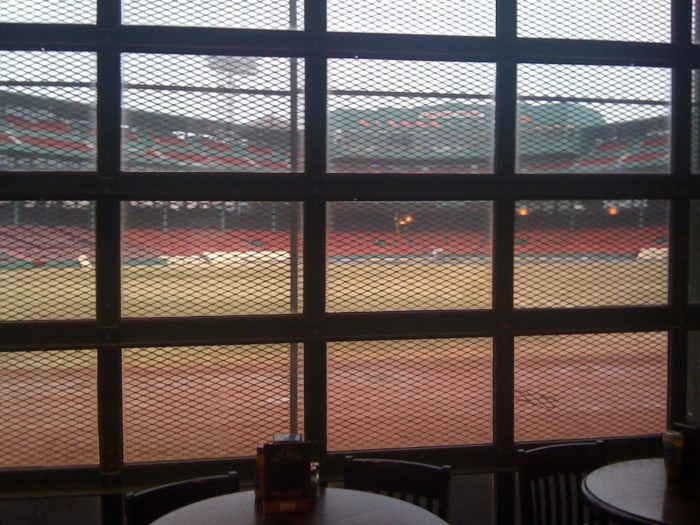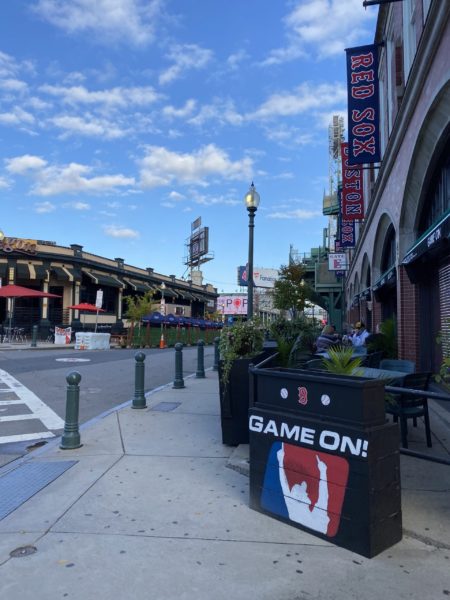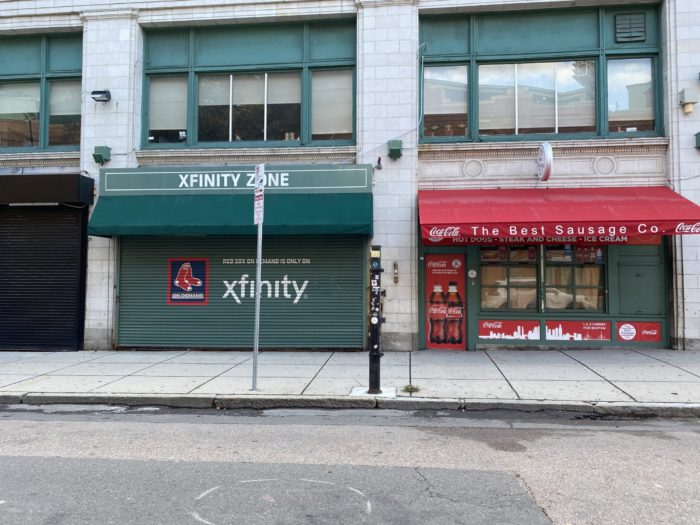
“You could feel people were energized about their return and wanted to watch their games.”
When the good times were good, they were so good. So good, so good.
The last few months, however, have been decidedly less good for the Fenway area. With the allure of a commanding red brick ballpark that oversees a vibrant area on hold, businesses and restaurants that faced closures at the onset of the pandemic have stumbled to get back on their feet. The House of Blues is as empty and blue as Jersey Street has been on recent game nights, while for anyone who was around the area, watching the shortened Red Sox season was as appetizing as cold chowder.
“Fenway went from all hustle and bustle to a ghost town,” Red Sox Team Store General Manager Scott Sakland told DigBoston. Sakland noted that the team store remained closed until June 8, and said they were forced to furlough many workers. “It was an unbelievably difficult situation.”

Residence Inn by Marriott Boston Back Bay General Manager Sharad Chand described the turmoil as “eerie.” After a two-month closure, the hotel reopened with a strict set of safety measures in line with CDC guidelines. Although the hotel has started to welcome back guests, including first responders and essential workers, Chand fears for the sustainability of many other Fenway businesses.
“Some restaurants and hotels will reopen, but a lot won’t,” Chand said. “They can’t. Business is nowhere close to 2019 levels and that goes for everyone in the market.”
Restaurants especially have faced difficulties adjusting to ever-changing state and federal restrictions. Yard House Manager Steve Arakelian noted that the restaurant was essentially “dormant” aside from the kitchen after Massachusetts moved to take-out and delivery only on March 17. He described the new environment as “way too quiet,” with a noticeable decrease in foot traffic by day and totally empty streets by night. When restrictions on outdoor and indoor dining were lifted in June, restaurants had to adjust on the fly.
“The state was constantly changing the goalposts, we had less than 48 hours to plan for some of the new changes. It was a summer of having to adapt and rise to different challenges,” Arakelian said.
Following months of negotiations after the postponement of the 2020 Major League Baseball season, the MLB announced on June 24 its finalized plan for a shortened 60-game season beginning on July 23. The Red Sox home opener versus the Orioles that day, an emphatic 13-2 win, was far quieter than its 2019 home opener in which the team returned to a sold-out Fenway Park as World Series Champions. With no fans permitted to watch the games in person, Sox faithful were relegated to the bars and patios of the Fenway area to watch Boston’s team play some excruciatingly mediocre baseball in an empty park. The Sox finished their brutal season dead last in the AL East with a 24-36 record, the firing of manager Ron Roenicke, and significant question marks raised about the team’s direction for the 2021 season.
Nonetheless, the lackluster performances provided a few sparks of hope for the Fenway area. Arakelian noted that sales were stronger when baseball resumed, and said fans at least returned to the area to watch games on the huge screens of bars and restaurants.
“You could feel people were energized about their return and wanted to watch their games,” he said. “It made everyone feel a little more normal to see Sox fans wearing their jerseys back in the Fenway area, even if the team was not very good at all.”
At least one fan got to enjoy watching the Sox suffer from the stands. On September 20, a man in a Red Sox shirt managed to climb onto the Green Monster during the team’s series with the New York Yankees. Confused, he proceeded to chant “Go Yankees” and yelled about 9/11 until he was removed by security. If there’s one moment that can encapsulate the Sox’s sad season in the strange year of 2020, it’s that one.

Meanwhile, the Fenway area has undergone a lot of changes in recent months and will continue to see more transformations in months ahead. The sounds of Sox fans singing was replaced by masked voters who cast their ballots in the stadium on Oct. 17 as part of a push to encourage early voter turnout (including one Boston woman who went viral for her love of Dunkies.) Fenway Sports Group Real Estate, the group that owns the Red Sox, announced a new plan to redevelop five-acres of the surrounding Fenway Park area, consisting of new offices, apartments, retail stores, a hotel, and public green spaces. The Red Sox organization itself was forced to lay off 10% of full-time employees while it also began the overhaul of players and coaches in hopes of a stronger season.
There’s still a lot of uncertainty around Fenway Park, but there’s also plenty of reason for optimism.
“Hopefully you see a greater appreciation for what people have in the neighborhood,” Arakelian told the Dig.
“Fenway was the heartbeat of the city,” Chand said. “I’m still confident going into next year that if things are aligned correctly, we should see some type of relative normalcy.”
Justin Dynia is a Political Science and Spanish student at Boston University and began writing for the Dig this year. He is also the co-Editor-in-Chief of the Boston Political Review and has covered community news in his hometown in New York.

